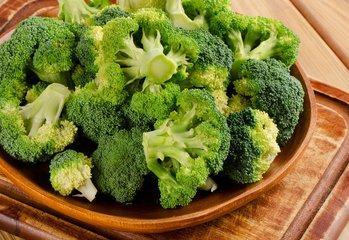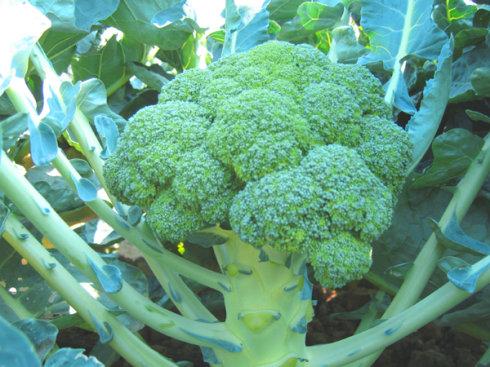How to grow Brassica oleracea L.var.italic Planch
Written by Maggie
Nov 16 2020

Brassica oleracea L.var.italic Planch is rich in nutrients and contains protein, sugar, fat, vitamins and carotene. It ranks first among other vegetables of its kind. It belongs to the cruciferous family as cabbage and is the easiest to grow in the cruciferous family. One of the plants that rarely needs maintenance during the planting cycle. It can be harvested twice a year (autumn and summer). Now, find a piece of sunny and fertile ground in your garden and start planting Brassica oleracea L.var.italic Planch Right!
Brassica oleracea L.var.italic Planch picture

Sowing of Brassica oleracea L.var.italic Planch
1. Detect soil pH.
Brassica oleracea L.var.italic Planch is suitable for growth in soil with a pH of 6.0 to 7.0. We can detect soil pH and add different nutrients to adjust soil acidity. During the planting process, the medicine regularly checks the soil pH.
The local agricultural extension department should be able to provide soil testing tools and methods.
If the soil pH is below 6.0, acid compost or mixed fertilizer can be used.
If the soil pH is higher than 7.0, you can add sulfur particles to mix.
2. Ensure that the soil is fertile and well drained.
If the soil does not meet the above conditions, some necessary preparations need to be made.
If the soil is prone to waterlogging, consider building a garden planting tube to lift the soil off the ground. If possible, cypress can be used as a plant box, because cypress will not rot when exposed to water.
To make the soil more fertile, you can add four inches of mature compost to the soil. If the soil is very poor, organic fertilizer with high nitrogen content can also be added.
Organic fertilizers like alfalfa, cottonseed meal, manure, etc. are very suitable for growing broccoli.
3. Choose a sunny area.
Although Brassica oleracea L.var.italic Planch likes sunlight, it also needs some shade.

4. Sowing Brassica oleracea L.var.italic Planch directly outdoors
If it’s Brassica oleracea L.var.italic Planch for summer harvest, Just sow two to three weeks before the last spring frost. If it is an autumn harvest, sow directly outdoors 85-100 days before the first autumn frost.
Rotate seeds indoors. If you want to plant seeds indoors, plant them in peat pots or other small seedling pots, and pay attention to ensuring sufficient sunlight.
The steps of indoor seeding are the same as outdoor seeding, except that no dilution is required when separating plant seedlings.
5. Dig several rows of 1.25 cm deep pits, each row is 7.5-15 cm apart.
Put a few seeds in each pit and fill it with soil.
If planting outdoors, lightly raking the soil with a rake to cover the seeds without harming the seeds.
If planting in a peat pot, use your fingers to lightly cover the seeds with soil.
6. Sowing Brassica oleracea L.var.italic Planch
After seeding, water the soil thoroughly.
But be careful not to leave puddles, Brassica oleracea L.var.italic Planch
Good drainage is required. If growing indoors, moisten the soil with a spray bottle.
7. Adjust the soil temperature.
Outdoor planting of Brassica oleracea L.var.italic Planch
Use mature compost, leaves or bark as organic mulch to make the soil temperature suitable. If the planting area is cold, you can cover it with black plastic to increase the soil temperature. You can buy plastic coverings in the garden supply warehouse, but use black plastic that is not too hard like oilcloth.
8. Seedling thinning outdoors.
When Brassica oleracea L.var.italic Planch
When the seedlings grow to a height of 2.5 cm, they need to be thinned in order to give them enough space to grow. Leave seedlings that look relatively healthy and thin the seedlings at intervals to ensure enough space between the seedlings to grow.

Indoor seedling transplantation
1. When Brassica oleracea L.var.italic Planch Seedlings need to be transplanted when they grow to a height of 10-15 cm. , Transplanting seedlings usually takes six weeks. The height and development of seedlings are much more important than the germination time.
2. Water thoroughly before placing seedlings.
Porting Brassica oleracea L.var.italic Planch
Before seedlings, make sure that you have roughly completed a suitable soil preparation method, including fertilization.
3. Dig a hole about 7.5 cm deep and plant the seedlings at intervals of 0.4-0.6 meters.
Bury the soil in Brassica oleracea L.var.italic Planch
The bottom leaf, but don't cover it. Small varieties can be planted one foot apart.
4. Adjust the soil temperature.Outdoor planting of Brassica oleracea L.var.italic Planch use mature compost, leaves or bark as organic mulch to make the soil temperature suitable. Covering the cross with black plastic increases the soil temperature.
5. Water the soil thoroughly after transplantation.
Maintenance of Brassica oleracea L.var.italic Planch
1. Give Brassica oleracea L.var.italic Planch on time
Watering.
Water 2.5-3.75 cm deep every week and plant Brassica oleracea L.var.italic Planch
The soil should be kept moist. If you want to plant Brassica oleracea L.var.italic Planch more professionally, you can use a rain gauge to measure the moisture of the soil.
Be careful not to pour Brassica oleracea L.var.italic Planch when watering on the flower bone, that will make the flower bone moldy. If it is in extremely hot or extremely dry conditions, water more.
2. Planting Brassica oleracea L.var.italic Planch
Fertilize once every three weeks.
Brassica oleracea L.var.italic Planch organic fertilizers with high nitrogen content like fish emulsifiers should be used when fertilizing during the growth of new leaves. Fast results need to be fertilized twice a week in real time.

3. Don't dig pits to transfer soil.
The roots are very shallow, turning the soil is likely to cause accidental damage to the root system and affect the growth of broccoli.
There are weeds around, use mulch to suppress the growth of weeds, instead of pulling them out directly, otherwise it may damage Brassica oleracea L.var.italic Planch root system. Chemical pesticides can also be used to remove weeds, so that it will not damage Brassica oleracea L.var.italic Planch
4. Harvest Brassica oleracea L.var.italic Planch
Brassica oleracea L.var.italic Planch can be harvested when the flower bones are tightly closed and dark green up. Don't wait until the flowers turn light green or yellow before harvesting. When the corolla reaches the stem, cut it off with garden shears. Do not break the corolla. Cut with scissors to take advantage of the next growth.
After cutting the Brassica oleracea L.var.italic correctly, new buds will grow on one side of the stem.
Latest Updated
- Benefits of Bugleweed - 7 Science-backed Health Benefits
- Bugleweed Dangers & Side Effects - Is It Poisonous?
- How to Plant Evergreen Trees - What You Should Know
- When to Plant Evergreens - Grow Guide for Evergreen Trees
- 12 Wonderful Evergreen Shrubs for Your Garden
- 12 Popular Evergreen Plants with Pictures for Beginners
- When And How To Prune A Lilac Bush Like a Pro
- How to Grow & Care for Lilac Vine (Hardenbergia Violacea)
- Japanese Lilac Tree (Syringa Reticulata) Care & Propagation Guide
- Shumard Oak Pros and Cons - What to Know
Popular Articles
- Winter maintenance of Antirrhinum Majus
- How to Grow Terminalia Mantaly Tree
- How to Grow and Care for Crossostephium Chinense
- How to grow Antirrhinum Majus in spring
- Peristeria Elata (Dove Orchid) Profile: Info & Care Guide
- Underwatered Snake Plant (Sansevieria Trifasciata) - Signs And How To Fix
- How to Care for Brazilian Jasmine Plant (Mandevilla Sanderi)
- How to Grow & Care for Graptopetalum Purple Delight in Summer
- Rosa Chinensis (China Rose): Plant Growing & Care Tips
- How to Care for Baby Sun Rose (Aptenia Cordifolia)